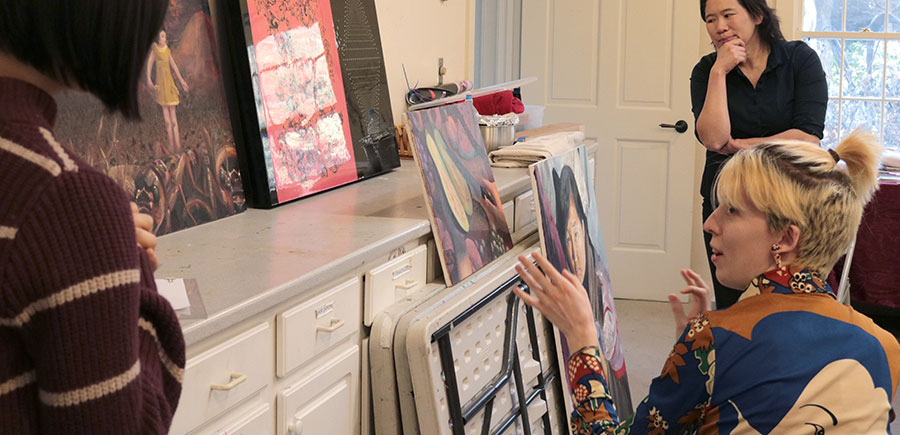
Critique is a fundamental part of the artistic process, providing artists an opportunity to get a fresh pair of eyes on their artwork.

Discussion led by Art Prof Clara Lieu and Teaching Artists Cat Huang, Lauryn Welch, and Casey Roonan.
Critique is an essential component of the artistic process. This tutorial will demonstrate and explain concrete, practical strategies for both art teachers and art students which they can apply in their artistic process.

A wide range of critique formats will be shown and explained: one-on-one art critiques, small group art critiques, methods for self-critique, large group art critiques within an art class, and more.
For every art teacher, leading art critiques during an art class is an ongoing challenge.

Every student, every artwork, and every art critique is different. In the context of any art critique, teachers need to be alert, responsive, and ready to handle any circumstance that arises in the conversation.

Art students have their own challenges as participants in a group critique, how do you speak articulately about your own artwork? How do you make comments that are tactful and that will impact your peers in a positive way?
This video provides a comprehensive look at critiquing art.

Art Prof has a number of videos on how to perform an art critique. And for most people, they follow the rules and give other members 3 crits for every post of their own in the crit channel.
Some do it to “follow the rules” and others do see that providing crits to fellow members generates positive community interactions.
People appreciate being “seen” and often tend to respond to the same members that responded to them. But there are more benefits to critiques than may be apparent.

The most useful benefit is that you are training your eyes and mind. With each critique, you are learning how to look at art and see things you like and things that you don’t like so much.
You notice the “vibe” or the feeling the piece generates. With practice you can see tangents, perspective and proportion. If there are colors, you can see if they work well together or distract from the piece.

You get used to looking at a color snapshot of a piece and turning it into a black and white photo so you can better see the values.
You make sure in each piece you have a range of values/tone – from the darkest darks to the lightest lights.
And with all that information in your head, you can look at your own work and run through that checklist. So each time you give someone else a critique, know that you are gaining something too.

You are working your “art brain muscle” to be able to identify areas in your own art that may need a little more work or attention. Critique of someone else’s art makes your art better.
The other benefit that you can realize from exercising your crit muscle is being able to separate your product from yourself. The first few times someone critiques your work, it may be difficult for you.

As you give and get critiques, you start seeing that it’s simply a matter of determining if the piece needs more work.
It may take time, but you eventually realize that the critique is not judging your artwork, but suggesting ways it can be improved.
It is not a valuation of you as a person. And it is not an evaluation of you as an artist. It’s about the piece, not the person.

BFA Art School Portfolio Critique This video provides a critique of art art school portfolio, starting with an overview of…

Class Group Critique Art Prof Clara Lieu demonstrates how to run a group art critique in a classroom.…

Printed Art Publications Shahzia Sikander Art New EnglandArt in PrintArtforumArtscope Magazine Bomb Magazine New American Paintings Printed Matter…